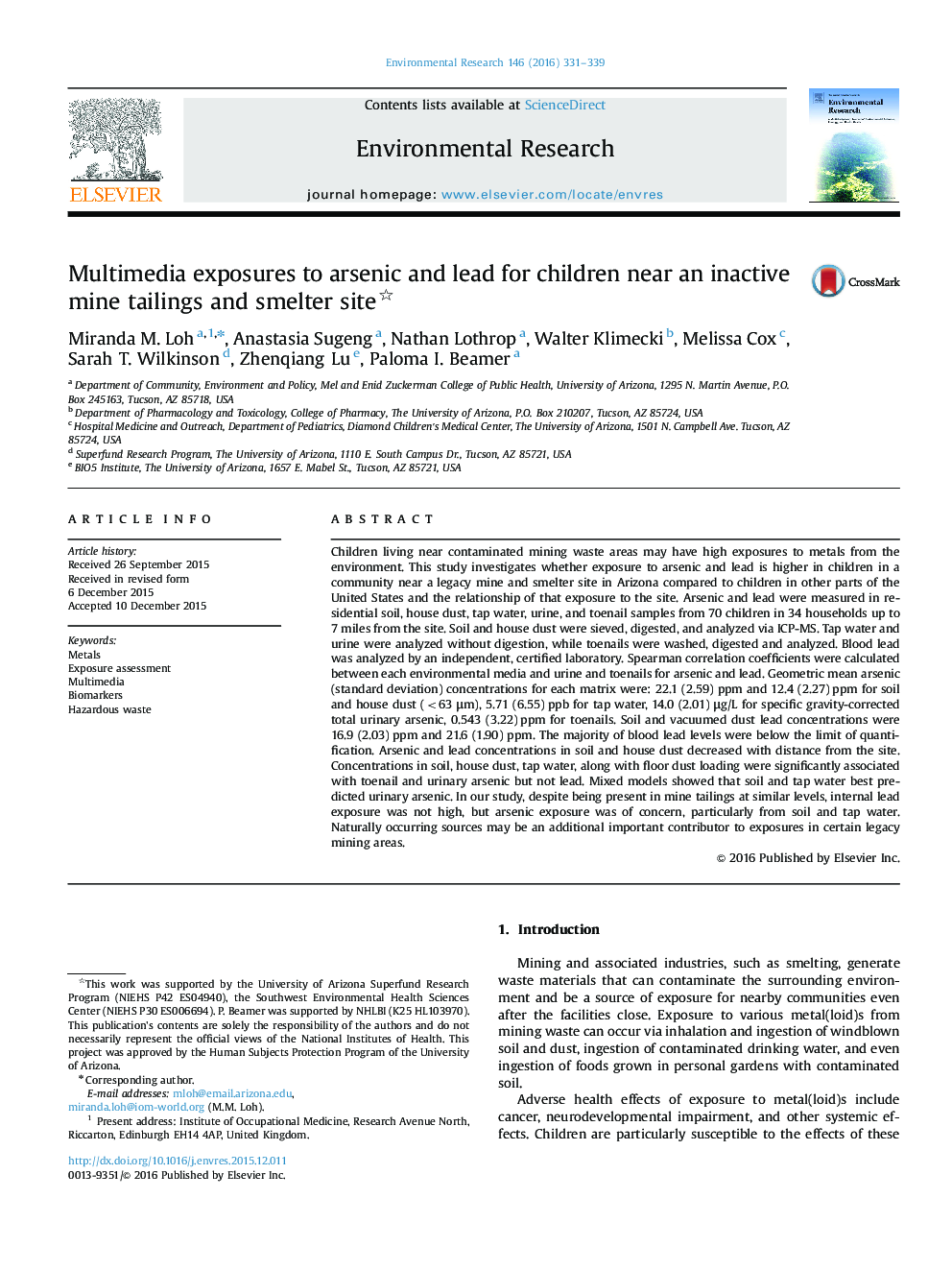| کد مقاله | کد نشریه | سال انتشار | مقاله انگلیسی | نسخه تمام متن |
|---|---|---|---|---|
| 6352143 | 1622557 | 2016 | 9 صفحه PDF | دانلود رایگان |
عنوان انگلیسی مقاله ISI
Multimedia exposures to arsenic and lead for children near an inactive mine tailings and smelter site
ترجمه فارسی عنوان
آلودگی چندرسانه ای به آرسنیک و سرب برای کودکان در نزدیکی یک بیل مین های غیر فعال و سایت ذوب ریخته گری
دانلود مقاله + سفارش ترجمه
دانلود مقاله ISI انگلیسی
رایگان برای ایرانیان
کلمات کلیدی
فلزات، ارزیابی قرار گرفتن در معرض، چند رسانه ای، بیومارکرها، زباله های خطرناک،
موضوعات مرتبط
علوم زیستی و بیوفناوری
علوم محیط زیست
بهداشت، سم شناسی و جهش زایی
چکیده انگلیسی
Children living near contaminated mining waste areas may have high exposures to metals from the environment. This study investigates whether exposure to arsenic and lead is higher in children in a community near a legacy mine and smelter site in Arizona compared to children in other parts of the United States and the relationship of that exposure to the site. Arsenic and lead were measured in residential soil, house dust, tap water, urine, and toenail samples from 70 children in 34 households up to 7 miles from the site. Soil and house dust were sieved, digested, and analyzed via ICP-MS. Tap water and urine were analyzed without digestion, while toenails were washed, digested and analyzed. Blood lead was analyzed by an independent, certified laboratory. Spearman correlation coefficients were calculated between each environmental media and urine and toenails for arsenic and lead. Geometric mean arsenic (standard deviation) concentrations for each matrix were: 22.1 (2.59) ppm and 12.4 (2.27) ppm for soil and house dust (<63 μm), 5.71 (6.55) ppb for tap water, 14.0 (2.01) μg/L for specific gravity-corrected total urinary arsenic, 0.543 (3.22) ppm for toenails. Soil and vacuumed dust lead concentrations were 16.9 (2.03) ppm and 21.6 (1.90) ppm. The majority of blood lead levels were below the limit of quantification. Arsenic and lead concentrations in soil and house dust decreased with distance from the site. Concentrations in soil, house dust, tap water, along with floor dust loading were significantly associated with toenail and urinary arsenic but not lead. Mixed models showed that soil and tap water best predicted urinary arsenic. In our study, despite being present in mine tailings at similar levels, internal lead exposure was not high, but arsenic exposure was of concern, particularly from soil and tap water. Naturally occurring sources may be an additional important contributor to exposures in certain legacy mining areas.
ناشر
Database: Elsevier - ScienceDirect (ساینس دایرکت)
Journal: Environmental Research - Volume 146, April 2016, Pages 331-339
Journal: Environmental Research - Volume 146, April 2016, Pages 331-339
نویسندگان
Miranda M. Loh, Anastasia Sugeng, Nathan Lothrop, Walter Klimecki, Melissa Cox, Sarah T. Wilkinson, Zhenqiang Lu, Paloma I. Beamer,
